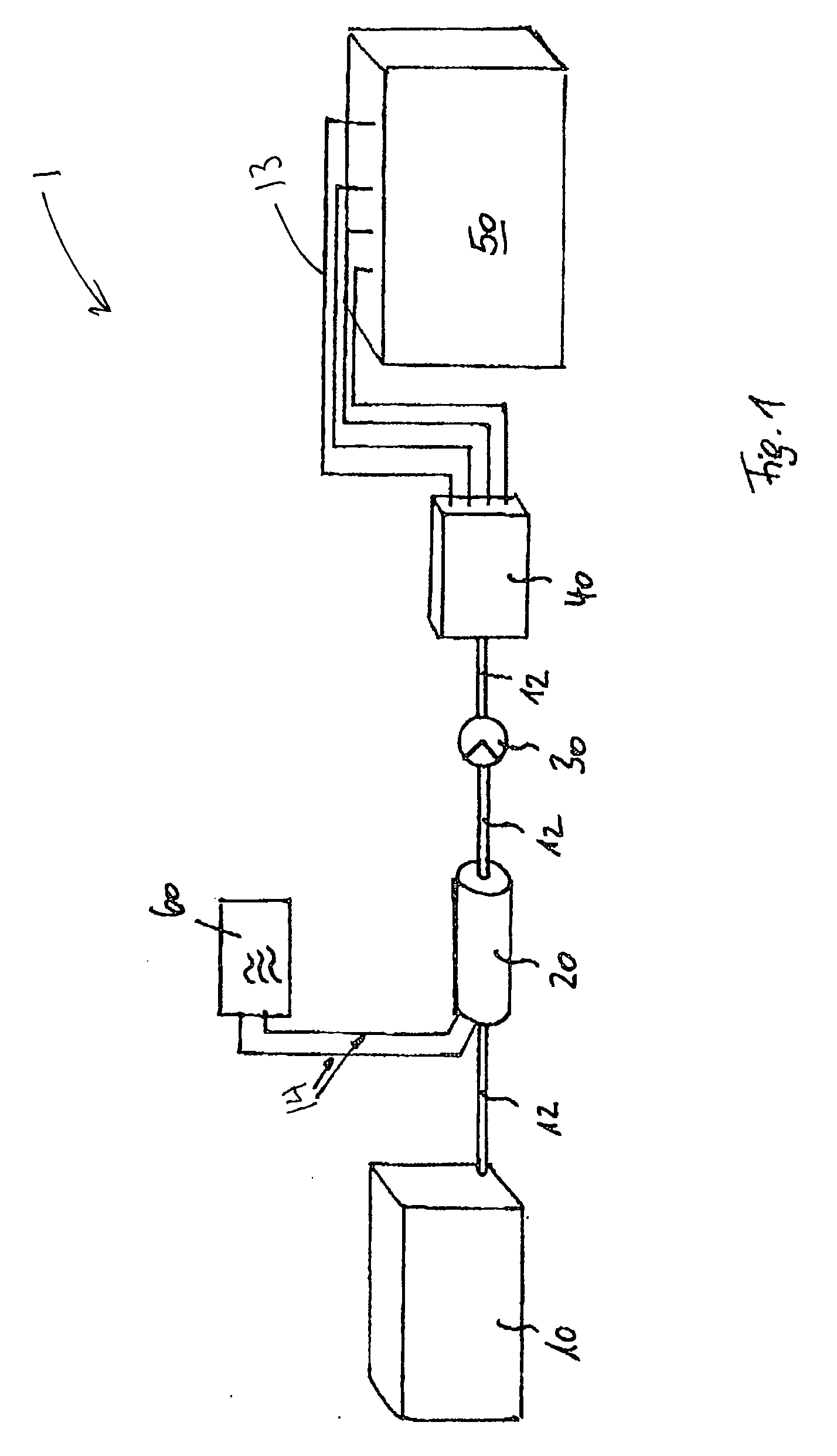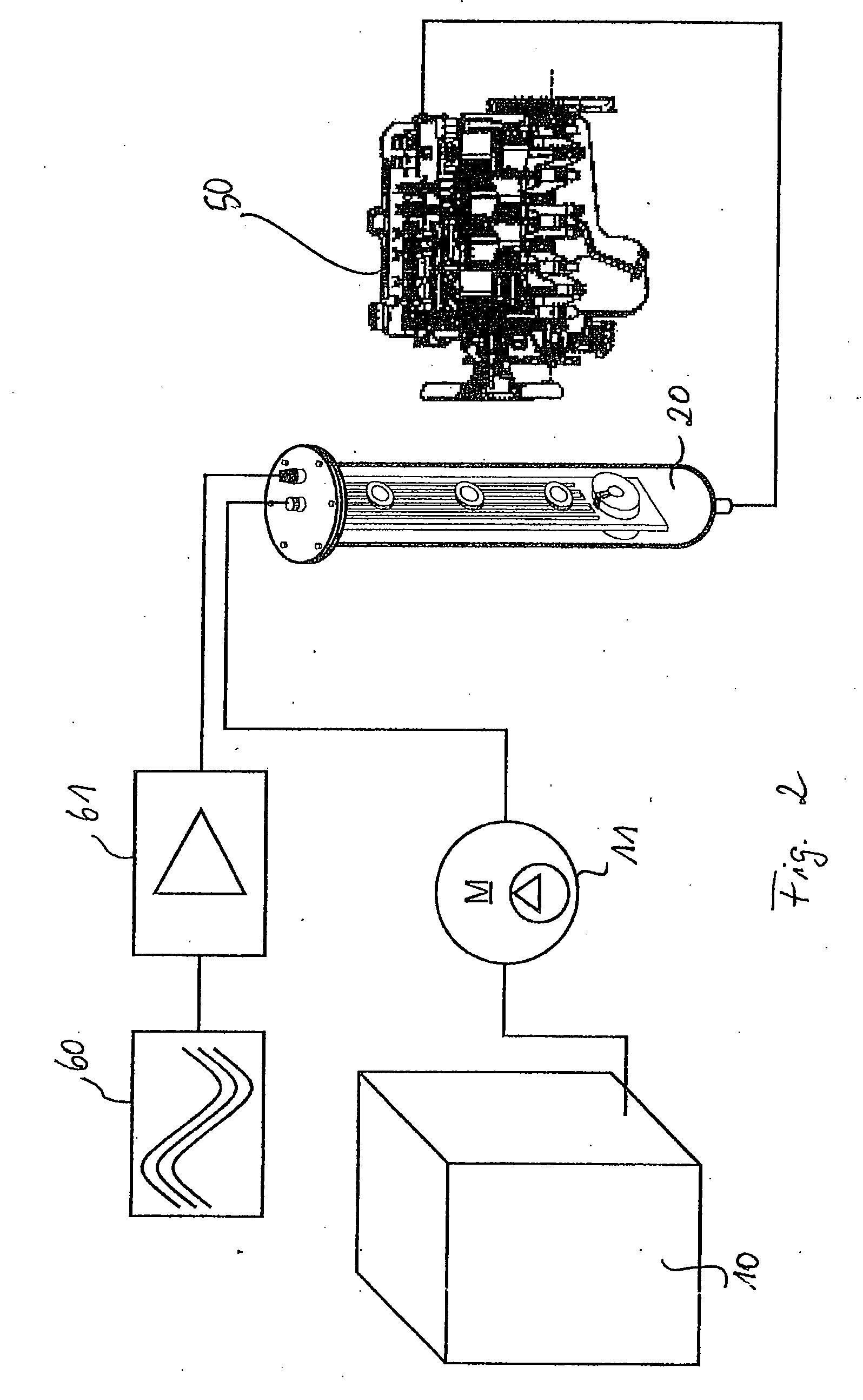Method for avoiding and/or reducing pollutant percentages in the exhaust gas of an internal combustion engine
a technology of pollutant percentage and exhaust gas, which is applied in the direction of engine components, machines/engines, charge feed systems, etc., can solve the problems of limiting their occurrence in a considerably reduced degree upon combustion, and achieve the effect of reducing the fuel consumption of the internal combustion engin
- Summary
- Abstract
- Description
- Claims
- Application Information
AI Technical Summary
Benefits of technology
Problems solved by technology
Method used
Image
Examples
Embodiment Construction
[0021]FIG. 1 shows a diagrammatic view of an internal combustion engine 1 according to the disclosed subject matter. The internal combustion engine 1 has a tank 10 for receiving fuel, from which a fuel line 12 runs to a fuel treatment unit 20. From fuel treatment unit 20 the fuel line 12 further goes to the fuel pump 30 and from there to the injection pump 40. The injection pump 40 makes the fuel available to the engine 50 by way of injection lines 13, the fuel is then burnt in the engine 50. It will be appreciated that the fuel pump 30 can also be disposed between the tank 10 and the fuel treatment unit 20 to convey the fuel.
[0022]There is further provided a frequency generator 60, which by way of lines 14 transmits electromagnetic signals to the fuel treatment unit 20, including transmission members (e.g., antennas) (not shown) arranged within the fuel treatment unit 20. The electromagnetic signals having preset frequencies and having adequate amplitude, the electromagnetic signal...
PUM
 Login to View More
Login to View More Abstract
Description
Claims
Application Information
 Login to View More
Login to View More - R&D
- Intellectual Property
- Life Sciences
- Materials
- Tech Scout
- Unparalleled Data Quality
- Higher Quality Content
- 60% Fewer Hallucinations
Browse by: Latest US Patents, China's latest patents, Technical Efficacy Thesaurus, Application Domain, Technology Topic, Popular Technical Reports.
© 2025 PatSnap. All rights reserved.Legal|Privacy policy|Modern Slavery Act Transparency Statement|Sitemap|About US| Contact US: help@patsnap.com



